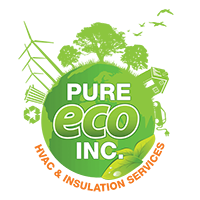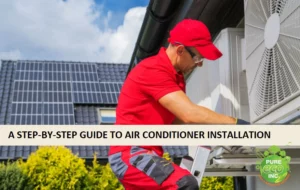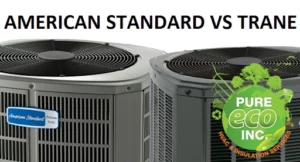What Is Fiberglass Insulation?
Fiberglass insulation is a thermal insulating material made from fine fibers of glass.
It is designed to be used in walls, ceilings, and attics as a barrier that resists the transfer of heat, cold, and sound between the interior and exterior of homes or businesses. Fiberglass is one of the best choice to regulate internal attic temperatures and minimizes energy loss.
When you install insulation, your home feels comfortable during heatwaves, since it is resistant to heat, or on cold snaps as it cold resistant as well. With quality design insulation, you spend less on electricity and energy and you lower your carbon footprint. Due to its cold and heat resistance capacity, insulation increases the value of your home and is a great home investment for your property.
What is Fiberglass Made of?
“Fiberglass” is a kind of plastic material that is reinforced by tiny “glass fibers” that give the material greater strength.
How does fiberglass work? It works by trapping air within its tiny glass fibers, which stops the flow of heat and sound from passing through. In many cases, the glass fibers are made out of recycled glass, so fiberglass can be good for our environment.
Usually, fiberglass insulation comes in either rolls of paper-backed fiberglass batts or as loose-fill insulation to be blown in.
The R-value of fiberglass is high, meaning that it offers greater thermal resistance than many other materials. Coupled with its affordable cost, fiberglass insulation can make your home electricity efficient and save you money on your bills.
How Does Fiberglass Insulation Work?
Air is trapped in the fibers of the fiberglass insulation. These fine glass fibers create a network of small pockets of air that insulate your interior. When heat attempts to escape your home during the winter or intrude during the summer, it gets stuck in this barrier.
The physics behind fiberglass insulation is simple. Air is a poor conductor of heat, so these trapped air pockets act as an effective buffer against temperature fluctuations. Heat naturally seeks to move from warmer areas to cooler ones. Fiberglass insulation slows down this process by forcing heat to pass through multiple layers of glass fibers and trapped air, thus impeding its flow. Whether it’s external heat trying to come in or internal heat escaping through, the air pockets act as barriers.
The effectiveness of fiberglass insulation is quantified using the R-value, which measures its thermal resistance. The higher the R-value, the greater the insulation’s ability to resist heat flow. The R-value of fiberglass insulation per inch of product ranges between 2.1 and 2.7. While there are other materials that are even more efficient insulators than fiberglass, fiberglass is cost-effective and a valuable insulation material.
Advantages of Fiberglass Insulation
When it comes to insulating your home, fiberglass insulation products offer plenty of advantages that make them a top choice for homeowners.
- Energy Efficiency – Your Wallet’s Best Friend
Fiberglass insulation is very good when it comes to energy efficiency. By creating a thermal barrier that keeps your home warm in winter and cool in summer, it reduces the strain on your heating and cooling systems and lowers your electricity bill. You use less energy to maintain a comfortable temperature indoors and you benefit from substantial savings on your energy bills.
Over time, the cost-effectiveness of fiberglass insulation is obvious as it helps you trim down monthly expenses and the insulation has paid for itself.
- Fire Resistance – Guarding Against the Unexpected
Safety is a top priority in any home, and fiberglass batt insulation provides an added layer of protection with its innate fire-resistant properties. Composed of non-combustible materials, fiberglass insulation does not fuel the spread of flames in case of a fire emergency. This makes it invaluable for evacuation purposes and to limit property damage.
- Allergen-Free Comfort – Breathe Easy
Indoor air quality matters, especially for those with allergies or respiratory sensitivities.
Fiberglass insulation is a breath of fresh air in this regard. Unlike some other insulation materials, it doesn’t trap allergens like dust mites, pollen, or mold spores. The air inside your home remains clean and fresh and the insulation reduces the risk of allergies and respiratory issues caused by moisture.
- Long-lasting and Minimal Maintenance – a Wise Investment
Fiberglass wall insulation is built to last. Its durability ensures it maintains its insulating effectiveness over the years without settling or sagging.
With such a long lifespan, fiberglass insulation is highly cost-effective since you don’t need to replace it frequently. As a bonus, fiberglass insulation is low-maintenance, sparing you the time and expense of regular upkeep. It’s an investment that delivers lasting comfort and value to your home and you only need to pay for the initial installation cost.
Will Fiberglass Insulation Cause Cancer?
There is talk about the relationship between fiberglass and cancer. If you Google fiberglass online, you will find a recurring question, “Does fiberglass really cause cancer?”
There is no proof that fiberglass is linked to cancer, nor is there any substantial evidence for it causing cancer in humans. There were some studies done on rats where fiberglass fibers were implanted directly into the rodents’ lungs. Unsurprisingly, this increased the risk of cancer. The manner in which the fibers were implanted is suspect and makes these studies rather controversial and inconclusive.
That being said, fiberglass can give you skin rashes and itchiness if you touch it repeatedly and frequently and some people have displayed respiratory problems in extreme cases.
This is why technicians working with fiberglass always wear gloves, pants, a long-sleeved shirt, goggles, a face mask, and full protective gear. The necessary precautions when handling fiberglass are a good enough reason to have professionals like Pure Eco Inc. handle the installation process for you. Once it’s encased in your wall, roof, or floor, fiberglass is perfectly safe.
Types of Fiberglass Insulation
Fiberglass insulation comes in different forms, each tailored to specific applications and installation methods. At Pure Echo we use fiberglass made from recycled products as a conscious and environmental choice.
There are two common types of insulation: batts and rolls, and loose-fill insulation.
Batts and Rolls – the Familiar and Flexible Choice
Batts and rolls are the most recognized and widely used form of fiberglass insulation. These are flexible, pre-cut sheets or rolls of fiberglass insulation designed to fit snugly between wall studs, ceiling joists, and floor joists. They are a favorite among DIY enthusiasts and professional installers alike due to their ease of handling and versatility.
Batt insulation is typically rectangular or square pieces of insulation, while the roll is a continuous sheet wound into a roll for easy transport and installation. The thickness of batts and rolls can vary. Thicker batts and rolls deliver better ceiling insulation. A professional insulation company like Pure Eco Inc. will calculate the necessary thickness of the fiberglass insulation.
Installation is straightforward: you measure the space between your framing and cut the batt or roll to fit, then simply place it into the cavity. Batts and rolls are an excellent choice for insulating walls, attics, and floors.
Loose-Fill Insulation – Filling Every Nook and Cranny
Loose-fill fiberglass insulation, as the name suggests, consists of loose fibers or granules that can be blown or poured into spaces to create a seamless layer of insulation. It’s particularly handy when dealing with irregularly shaped or hard-to-reach areas, such as attics with many obstructions or existing walls that require insulation.
The installation process involves using specialized equipment to distribute the loose-fill insulation evenly. It conforms to the shape of the space, effectively filling every nook and cranny. Loose-fill insulation is a great option for adding insulation to existing structures or for areas where traditional batts and rolls might be challenging to install.
One notable advantage of loose-fill insulation is its ability to provide a higher R-value in certain applications which means even greater energy savings. It’s a versatile choice that can be used to boost the thermal performance of attics, walls, and crawl spaces.
Batts and rolls offer a user-friendly, customizable solution for standard insulation needs, while loose-fill insulation excels in insulating unconventional spaces and achieving higher R-values where required. The choice between the two depends on your specific insulation goals and the layout of your home.
Have more questions about different forms of insulation? Check our website’s Frequently Asked Questions Section and learn the pros and cons of foam insulation, wool insulation, or duct insulation and what is best for your home or business.
Tips for Fiberglass Insulation Installation
Here are some key considerations and tips to keep in mind if you are considering having fiberglass insulation installed in your California home or business.
Tips for DIY Installation:
Measure Twice, Cut Once. Accurate measurements are crucial. Double-check your measurements before cutting fiberglass insulation to minimize waste.
Safety Gear. Wear appropriate safety gear, including gloves, a dust mask, long sleeves, and safety glasses to protect yourself from fiberglass particles.
Necessary Tools of the Trade. Gather all necessary tools, such as a utility knife, straightedge, and a sturdy step ladder, before starting the installation.
Seal Gaps and Cracks. Use caulk or foam sealant to seal any gaps or cracks in the building envelope before installing insulation to maximize its effectiveness.
Proper Installation. Ensure that batts or rolls fit snugly without compressing them. Avoid overstuffing or leaving gaps that can reduce insulation’s effectiveness.
Hire professionals: if you lack the tools and protective gear to install the fiberglass insulation yourself, let professionals from Pure Eco Inc. handle the task. We can install your insulation quickly and we offer warranties on the materials and workmanship.
When Hiring Professionals:
Research and Select Reputable Contractors: Seek recommendations and check references before hiring insulation contractors. Look for professionals with a proven track record like Pure Eco Inc.
Get Multiple Quotes: Don’t settle for the first estimate you receive. Compare quotes from different contractors to ensure a fair price. Check carefully what’s included in the various offers and ask about warranties.
Specify Your Requirements: Clearly communicate your insulation needs and expectations to the contractor to avoid misunderstandings. Agree on a timeframe to minimize inconvenience around your home.
Ask About Safety Measures: Inquire about the safety protocols the contractor follows during installation to protect both their crew and your property.
Check for Licensing and Insurance: Verify that the contractor is licensed and insured, providing you with peace of mind in case of any unforeseen issues.
Safety Precautions
Ventilation: Ensure proper ventilation in the installation area to disperse any airborne fiberglass particles. Open windows and doors when working in enclosed spaces.
Protective Gear: Always wear the necessary safety gear, including a respirator, gloves, long-sleeved clothing, and eye protection, to minimize contact with fiberglass particles.
Minimize Skin Contact: Fiberglass can cause skin irritation. Minimize skin contact by covering up exposed areas.
Avoid Dust: To prevent inhaling fiberglass dust, use a respirator rated for fine particles and maintain good indoor air circulation.
Wash Up: After completing the installation, wash your hands and any exposed skin thoroughly. Wash any clothing that may have come into contact with fiberglass separately.
The History of Fiberglass
Fiberglass material is the first choice in residential and commercial insulation though it is also used in automobiles, boats, tents, and even curtains. However, the idea of fiberglass is hardly new. Even in ancient Egypt and Phoenicia, they were using a kind of fiberglass (or molten glass) insulation (tiny glass fibers woven into a coarse material).
In 1870, John Player pioneered the mass production of glass strands, creating mineral wool, an effective insulation material. A decade later, Herman Hammesfahr patented a durable and flame-retardant fiberglass blanket interwoven with silk.
Modern fiberglass emerged accidentally when Dale Kleist of Corning Glass inadvertently created glass fibers while attempting to weld glass blocks. In 1935, Corning Glass collaborated with Owens-Illinois to advance fiberglass development, patenting “Fiberglas” in 1936 and merging to form Owens-Corning in 1938. The companies innovated by spinning fibers into cloth and heat treating it to enhance flexibility, making it suitable for use in plastic laminates.
In 1936, Carlton Ellis of DuPont patented polyester resin, a composite when combined with Fiberglas. The manufacturing process of polyester resin was refined by German scientists. Its secrets were acquired by British agents and handed to American firms during WWII, leading to the development of the precursor to today’s polyester resin by American Cyanamid in 1942. By 1942, Owens-Corning manufacturers were already producing fiberglass and polyester components for wartime airplanes.
At first, the product was seemingly used for everything but insulating buildings, particularly in certain automobile parts. It was only decades later that it became popular as a home insulation product, and it has remained so ever since.
A Product with a Bright Future
With fiberglass insulation, you are not only embracing a time-tested solution but also looking forward to a future where energy conservation and home comfort go hand in hand. Let’s build a greener, more sustainable future.
Contact us today for more information and to get your free quote. We will assess your home and recommend the most suitable type and thickness of insulation based on these factors!
FAQs
What are the best materials for soundproof insulation?
Several materials are effective for soundproof insulation, including fiberglass, mineral wool, cellulose, foam panels, and mass-loaded vinyl. The best material for your project depends on factors like your budget, the level of soundproofing needed, and the installation area. Always choose the right material to achieve the desired level of soundproofing. Roxul, fiberglass, and spray foam are highly regarded options because of their superior soundproofing capabilities.
Where should I install soundproof insulation in my home or office?
You should place soundproof insulation strategically in areas where noise transfer is a concern. Common locations include walls between rooms, ceilings, or floors and between different levels of a building as well as around noisy equipment or appliances. The specific placement will depend on your noise problem and your goals for sound reduction.
How effective is soundproof insulation at reducing noise?
The effectiveness of soundproof insulation varies depending on the material used, its thickness, and the quality of installation. In general, soundproof insulation provides a means for reducing significantly noise levels, making spaces quieter and more comfortable. However, note that no insulation can completely eliminate all sound; it can only reduce it to a more tolerable level.
What is the ideal R-rating for soundproofing purposes?
When it comes to soundproofing services, the R-rating, which measures a material’s thermal resistance, may not be the primary consideration. Soundproofing relies more on the material’s ability to absorb, block, or dampen sound waves, which is typically measured by its Sound Transmission Class (STC) or Noise Reduction Coefficient (NRC) rating. The appropriate STC or NRC rating for soundproofing depends on the level of noise you want to reduce and the specific application. Generally, the higher the STC ratings or NRC ratings the better the soundproofing performance.
What is the most cost-effective soundproofing insulation option?
The least expensive insulation option for soundproofing is typically fiberglass insulation. It is widely available and at a relatively affordable cost compared to other materials like Rockwool or spray foam. However, the effectiveness of soundproofing may vary based on the specific application.






